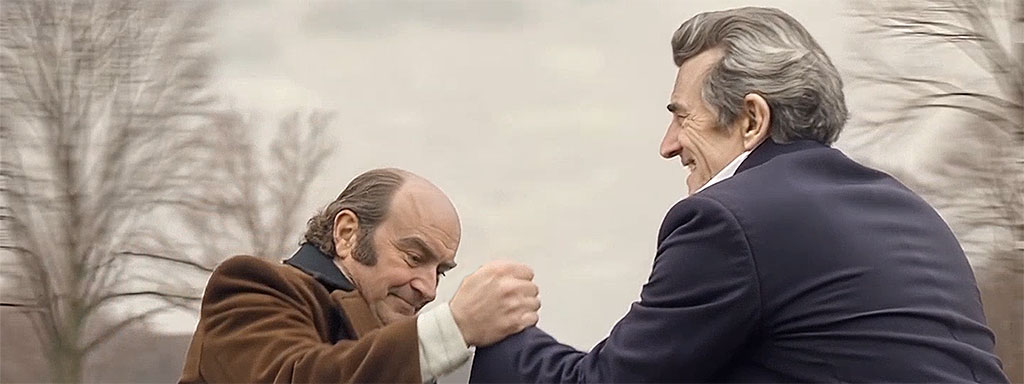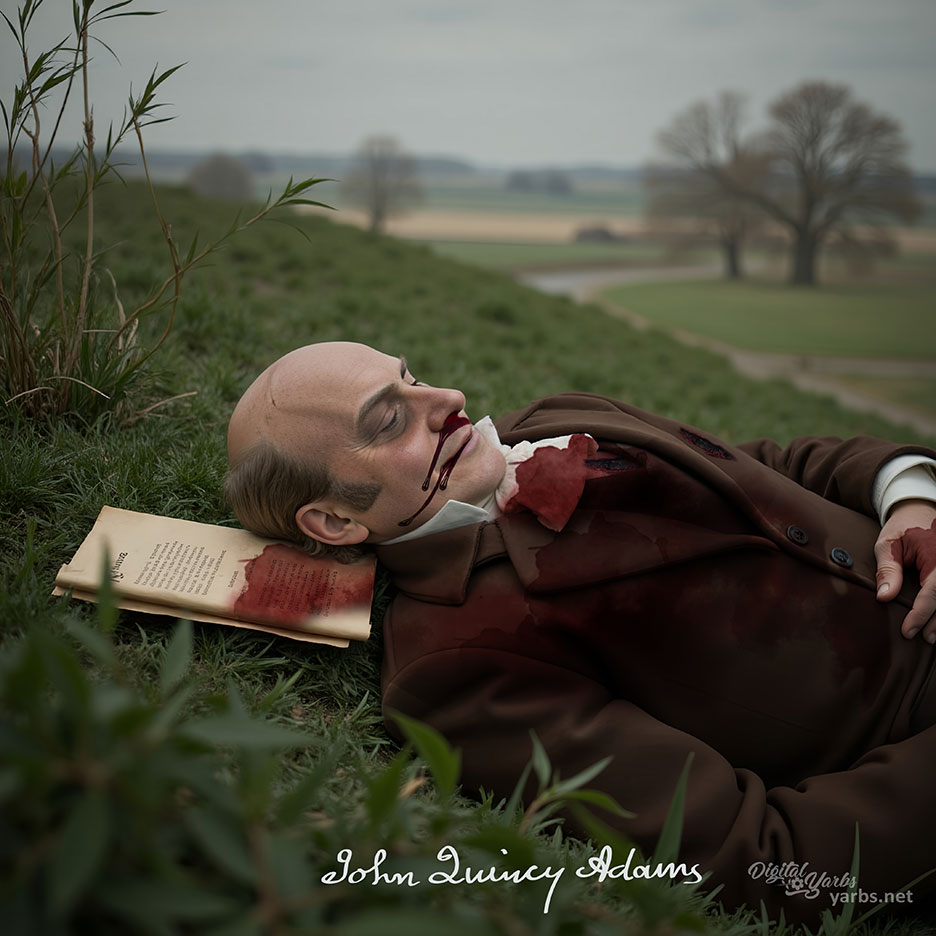John Quincy Adams vs. Andrew Jackson - The Battle
*Warning Graphic Content* Contains Scenes that some viewers may find disturbing
Images on this page were created for a fictional time travel alternate history story about Adams and Jackson
The Real Faces of John Quincy Adams and Andrew Jackson
To achieve the most accurate likenesses of John Quincy Adams and Andrew Jackson, an 1825 life mask of Adams and a daguerreotype photograph of Jackson were used in the scenes featured on this page.

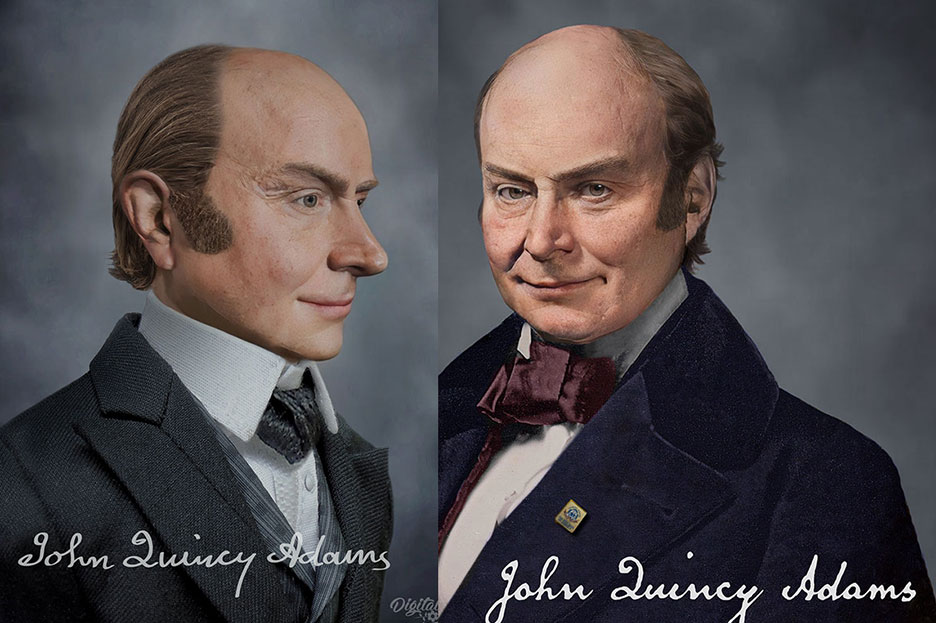
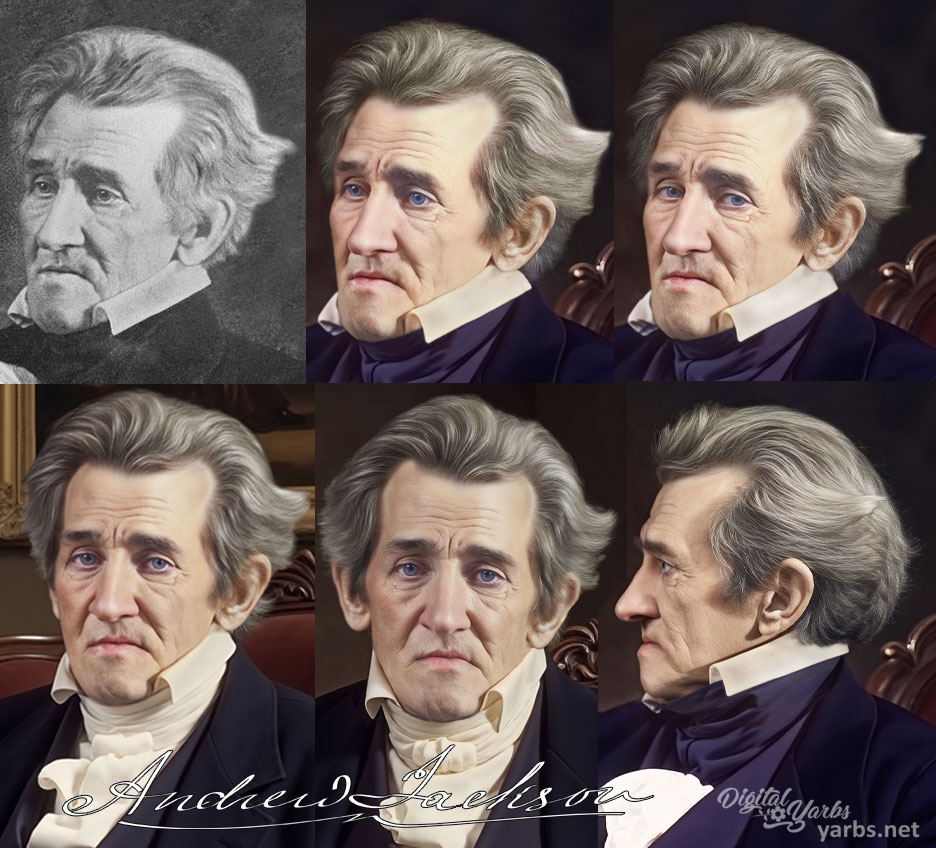
Andrew's likeness here is from his actual daguerreotype restored and enhanced using AI tools to change the facial angle. The goal is to acheive the most accurate and respectful likenesses of Andrew Jackson possible. The process involved a combination of AI tools and extensive Photoshop work. Unlike the quick, generic AI "pump and dumps" that are common today, his portrait was carefully refined—adjusting facial angles and hand-editing details to preserve Jackson’s true appearance. AI alone often alters the features of historical figures beyond recognition. My role is to ensure that Andrew Jackson looks like himself.
Andrew Jackson Confronts John Quincy Adams
Would Andrew Jackson kill John Quincy Adams?
Based on the available historical evidence, it is unlikely that Andrew Jackson would have killed John Quincy Adams in 1829 over the slander against Rachel Jackson. While Jackson was known for his temper and history of violence, the rivalry with Adams was primarily political, and there are no records of direct threats or plans for physical harm. Jackson's response was channeled through political means, such as his successful 1828 campaign, reflecting the norms of early American political culture. Jackson's expressions of anger, such as blaming Adams' supporters for Rachel's death, were rhetorical and public, aimed at mobilizing his base rather than inciting violence. To understand Jackson's likely response, it is useful to compare his actions in similar situations. In the case of Charles Dickinson, Jackson's response was immediate and violent, reflecting the personal nature of the insult and the cultural norms of dueling at the time. However, the context with Adams was different: Adams was a political figure, and any violence against him would have had significant legal and political repercussions, especially given Adams' status as a former president and sitting congressman after 1829.

Andrew Jackson's fictional confrontation with John Quincy Adams
If Jackson knew he would not suffer any legal consequences for his actions and Jackson confronted Adams in person, would Jackson physically hurt or kill Adams?
It is possible but not certain that Andrew Jackson would physically harm John Quincy Adams if they confronted each other in a setting with no legal consequences. Jackson’s volatile temper, history of violence, and deep personal resentment over the slander against his wife, Rachel, suggest he might act violently. However, his response could depend on the confrontation’s context, his emotional state, and whether he saw physical violence as the best way to address his grievances. Historical evidence leans toward Jackson favoring political or rhetorical retaliation over physical violence in his rivalry with Adams, but his past dueling behavior indicates he was capable of violence when provoked.
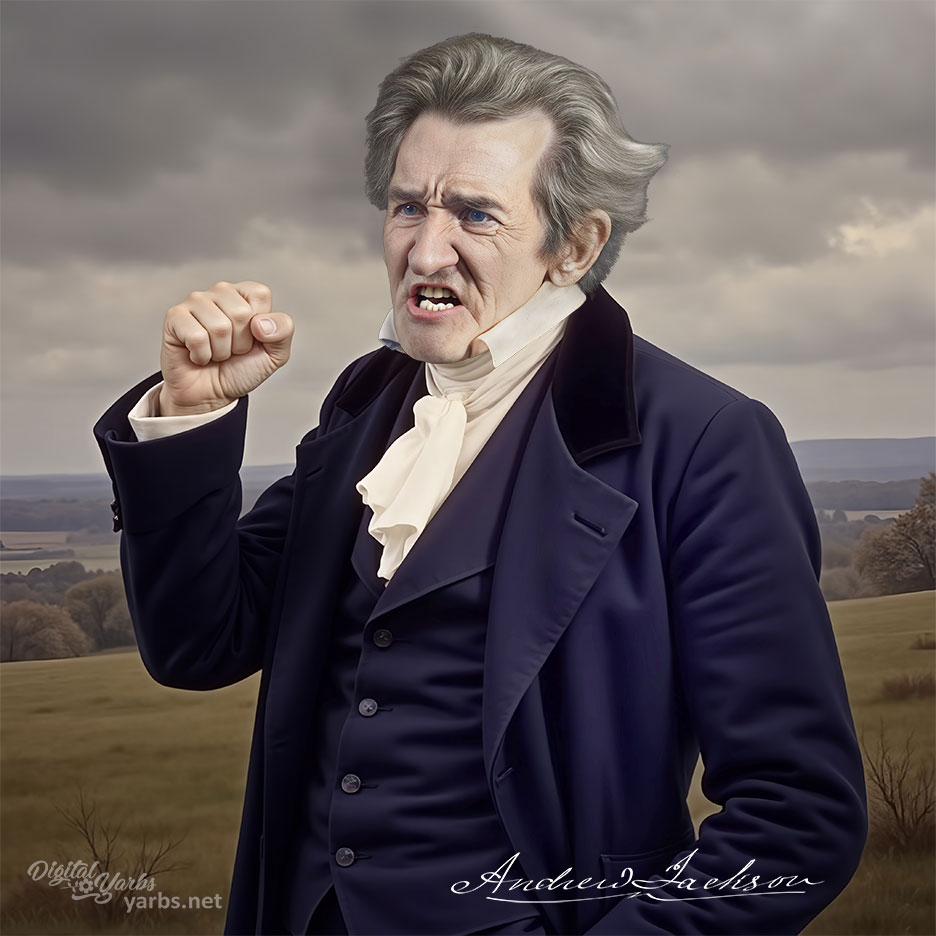
The focus is on whether Jackson’s character, history, and the specific grievances related to the 1824 election and slander against Rachel Jackson would lead him to physically harm or kill Adams. The response draws on historical records of Jackson’s behavior, their rivalry, and the cultural context of early 19th-century America.
Andrew Jackson was known for his fiery temperament and willingness to resort to violence when he felt his honor or that of his wife, Rachel, was insulted. Key examples include:
1806 Duel with Charles Dickinson: Jackson killed Dickinson in a duel after Dickinson insulted Rachel, calling her a bigamist. Jackson sustained a bullet wound but shot Dickinson fatally, demonstrating his readiness to use lethal force over personal slights.
Military Actions: As a military leader, Jackson was ruthless, notably executing British subjects Robert Ambrister and Alexander Arbuthnot during the First Seminole War, actions that sparked controversy but reflected his decisive and sometimes brutal approach.
Brawls and Confrontations: Jackson engaged in physical altercations, such as a 1813 brawl with the Benton brothers, showing his propensity for violence outside formal duels.
These incidents suggest Jackson was not averse to violence when he felt provoked, particularly regarding Rachel’s honor. However, his violence was often structured within the cultural norms of dueling or military action, which provided a framework for resolving disputes.
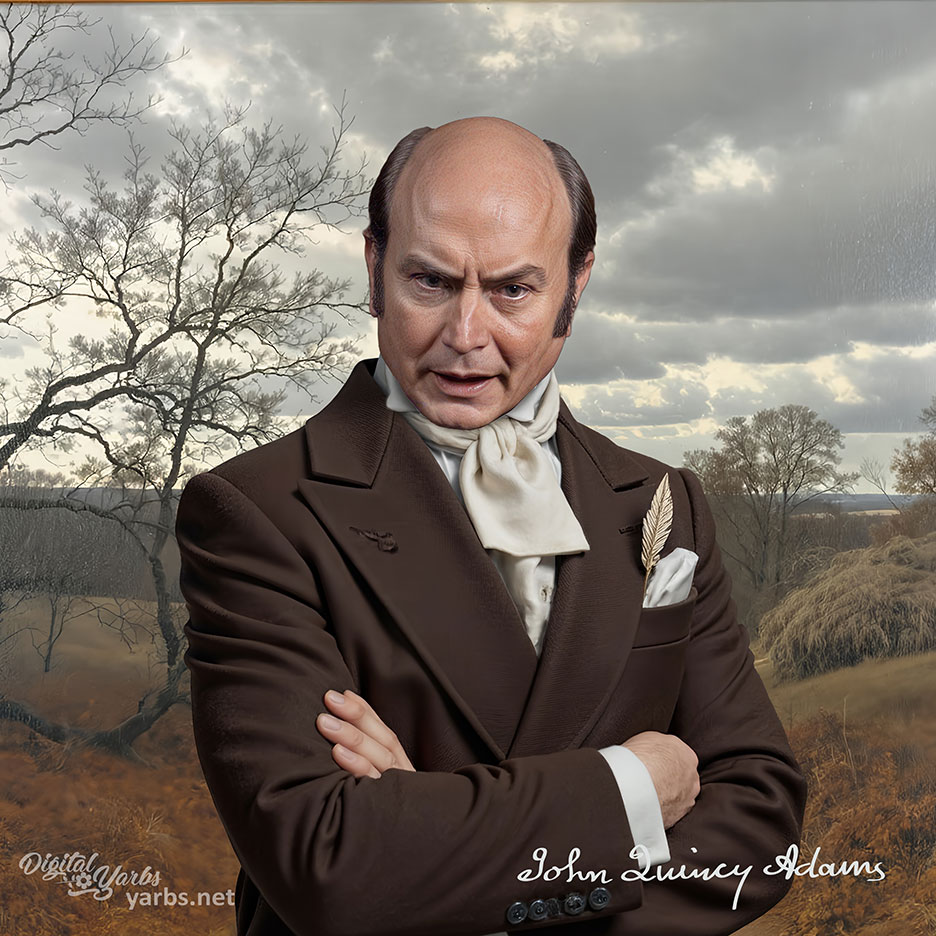
The rivalry between Jackson and Adams was intense, rooted in the 1824 election’s “corrupt bargain” and exacerbated by the 1828 campaign’s personal attacks. The slander against Rachel Jackson, accusing her of bigamy and adultery due to her earlier marriage, deeply wounded Jackson. He blamed Adams’ supporters, particularly Henry Clay, for these attacks, and Rachel’s death in December 1828, which he attributed to the stress of the campaign, intensified his resentment.
Jackson’s emotional attachment to Rachel and his belief that Adams’ campaign contributed to her death could provoke a violent reaction. His statement at Rachel’s funeral—“May God Almighty forgive her murderers, as I know she forgave them. I never can”—indicates a lasting grudge that might resurface in a direct confrontation.

Despite his temper, Jackson was strategic. His ability to build a political movement and win the presidency suggests he could prioritize non-violent means of asserting dominance, such as verbal confrontation or public humiliation, especially if he believed violence would not serve his broader goals.
Adams was a cerebral, diplomatic figure, unlikely to escalate a confrontation physically. His restraint might defuse Jackson’s aggression or, conversely, frustrate Jackson into acting out if he felt Adams was dismissive.
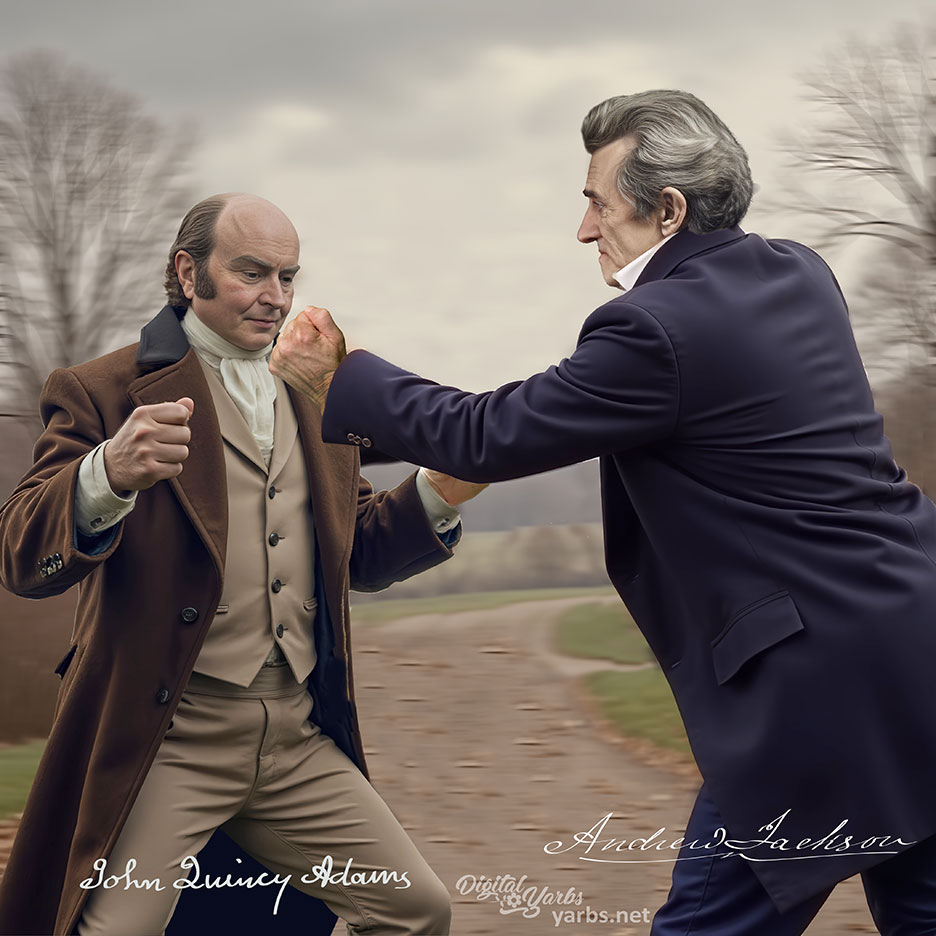

Jackson’s history suggests he could physically harm Adams if provoked during the confrontation, especially if Adams said something to reignite Jackson’s anger about Rachel or the 1824 election. A physical altercation, such as a strike or assault, is plausible given Jackson’s impulsiveness in past conflicts.
Killing Adams is less likely but not impossible. Jackson’s lethal duel with Dickinson was premeditated and followed dueling protocols, whereas an impromptu killing would deviate from his pattern. However, in a consequence-free setting, his emotional state—particularly if Adams appeared unrepentant—could push him toward extreme action.
Jackson might opt for verbal or symbolic dominance, such as publicly shaming Adams or demanding an apology, reflecting his political acumen and desire to maintain his reputation as a leader.
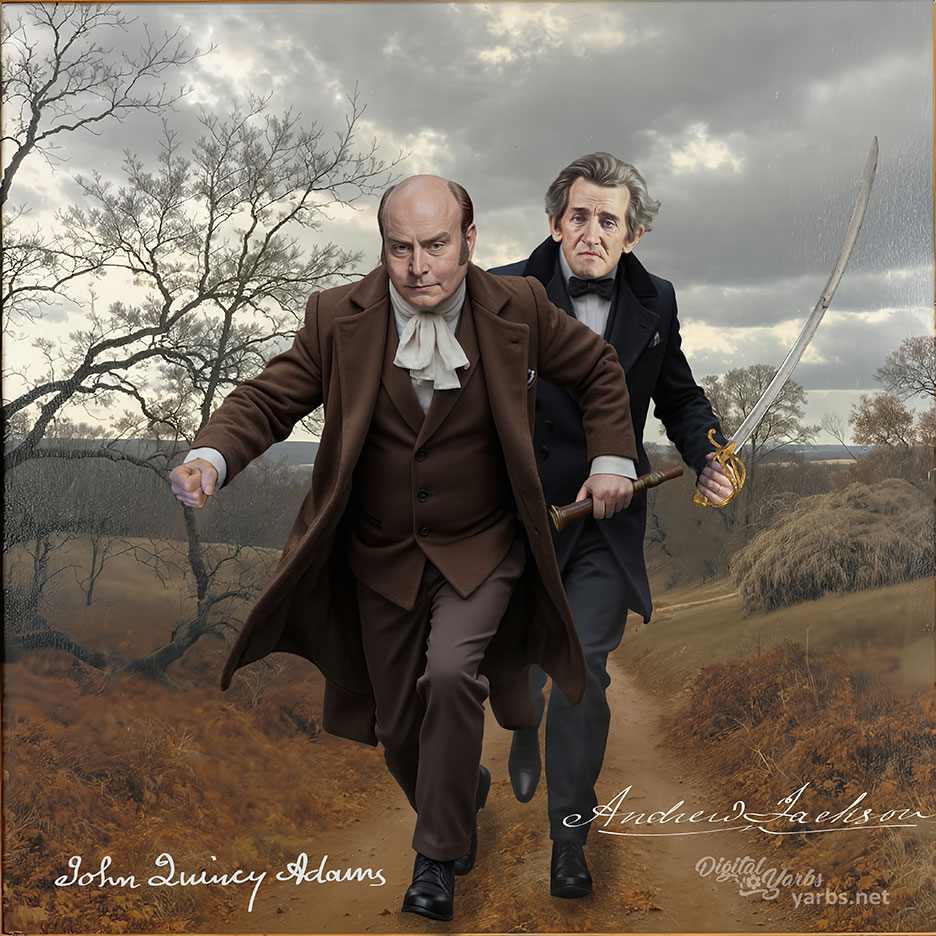
Something Goes Wrong
In this fictional time-travel tale, Jackson’s confrontation with Adams takes a disastrous turn. Believing he can escape the consequences, Jackson kills Adams—but he's eventually caught. The ripple effect is immediate: the time continuum begins to fracture, and history veers off course in dramatic and unforeseen ways.
*Warning Graphic Content*
Click blurred image to reveal.
*Warning Graphic Content*
Click blurred image to reveal.
Alternate History Timeline: Andrew Jackson Kills John Quincy Adams in 1829
1829: The Assassination and Immediate Fallout
Event: Andrew Jackson, enraged over the 1824 election and slander against his late wife, Rachel, kills John Quincy Adams, a former president and prominent congressman, in a personal confrontation. The act occurs shortly after Jackson’s inauguration as the seventh U.S. president.
Immediate Consequences
- National Shock: The murder of a former president by a sitting president is unprecedented, triggering widespread outrage and political chaos. Newspapers,amplify public division, with Jackson’s supporters defending his honor and Adams’ allies demanding justice.
- Impeachment Crisis: Congress, led by National Republicans and emerging Whigs, moves to impeach Jackson. His vice president, John C. Calhoun, assumes interim leadership, but Calhoun’s own tensions with Jackson (evident in their later Nullification Crisis disputes) complicate governance.
- Legal and Political Turmoil: Despite no legal precedent for prosecuting a sitting president, Jackson faces intense pressure to resign. His populist base, however, rallies around him, viewing the act as a defense of personal honor, polarizing the nation further.
- Impact on Jackson’s Presidency: Jackson’s agenda, including Indian removal policies and dismantling the Second Bank of the United States, stalls as his administration is consumed by the crisis.
1830–1832: Political Realignment and Calhoun’s Rise
- Impeachment Outcome: Jackson is impeached by the House but narrowly avoids conviction in the Senate, where his Democratic allies hold sway. He remains in office but is politically weakened, unable to push major legislation like the Indian Removal Act.
- Calhoun’s Ascendancy: Calhoun capitalizes on Jackson’s weakened state, positioning himself as a stabilizing force. He distances himself from Jackson’s actions, strengthening his influence in the South and among states’ rights advocates. This accelerates the formation of a proto-Whig coalition, uniting anti-Jackson forces.
- Nullification Crisis Intensifies: Without Adams’ moderating influence in Congress, where he historically opposed nullification, South Carolina’s push for nullification of federal tariffs escalates. Calhoun’s support for states’ rights leads to a more confrontational crisis, risking early sectional conflict.
1833–1836: Early Sectionalism and Weakened Democracy
- Jackson’s Decline: Jackson, unable to recover politically, does not run for re-election in 1832. Calhoun or a states’ rights Democrat like Richard Mentor Johnson wins the presidency, shifting focus to Southern interests and weakening federal authority.
- No Trail of Tears: Without Jackson’s forceful push for the Indian Removal Act, the forced relocation of Native American tribes is delayed or less severe, altering the trajectory of Native American history. Tribes like the Cherokee retain stronger territorial claims, leading to prolonged conflicts in the Southeast.
- Bank War Fizzles: Jackson’s campaign against the Second Bank of the United States loses momentum without his strong leadership. The bank survives longer, stabilizing the economy but entrenching elite financial interests, delaying populist economic reforms.
1837–1850: Accelerated Sectional Tensions
- Rise of the Whigs: The absence of Adams, a key intellectual and moral voice in Congress, weakens anti-slavery advocacy. Adams historically championed anti-slavery petitions, galvanizing abolitionist sentiment. Without him, the abolitionist movement grows more slowly, delaying the formation of a cohesive anti-slavery political bloc.
- Compromise of 1850 Delayed: Adams’ absence in Congress reduces pressure on slavery debates, leading to earlier and more volatile sectional conflicts. The lack of his diplomatic skills results in a weaker Compromise of 1850, escalating tensions between North and South.
1851–1860: Prelude to Civil War
- Civil War Arrives Early: Without Adams’ moderating influence and with stronger Southern dominance due to Calhoun’s earlier rise, the Civil War breaks out in the late 1850s, possibly triggered by disputes over Kansas-Nebraska or a failed compromise. The North, less prepared without a robust abolitionist movement, faces a more protracted conflict.
- Native American Influence: Stronger Native American presence in the Southeast, due to delayed removal policies, complicates Confederate and Union strategies, with tribes aligning variably, altering war dynamics.
1861–1900: A Different Reconstruction
- Prolonged Civil War: The war, starting earlier, is less industrialized, leading to a longer, more attritional conflict. The Union eventually prevails, but Reconstruction is harsher due to weaker Northern abolitionist sentiment, entrenching racial inequalities more deeply.
- Economic Shifts: The prolonged survival of the Second Bank strengthens financial elites, delaying populist reforms like those under later presidents. Industrialization proceeds unevenly, with the South remaining more agrarian.
1901–1950: Global Implications
- Weaker U.S. Global Role: A more divided and economically uneven U.S. enters the 20th century with less cohesion, reducing its influence in World War I and II. The U.S. remains isolationist longer, altering global power dynamics, with Europe and possibly Japan filling the vacuum .
- Civil Rights Delayed: Without a strong abolitionist foundation, civil rights advancements are slower, with segregation persisting deeper into the 20th century.
1951–2025: Modern Era
- Geopolitical Shifts: A less dominant U.S. leads to a multipolar world by 2025, with stronger regional powers like China or a united Europe. The U.S. struggles with internal divisions, rooted in earlier sectional conflicts, impacting its ability to lead globally.
- Native American Influence: Stronger Native American political presence, due to less aggressive removal policies, results in greater tribal sovereignty and representation in Congress by 2025, reshaping domestic policy.
- Cultural Impact: The U.S. lacks the unified national identity fostered by post-Civil War Reconstruction, leading to a more fragmented cultural landscape. Political polarization, evident in 2025, traces back to the early sectionalism exacerbated by Jackson’s act.
Key Long-Term Changes
- Political Landscape: The Democratic Party, tied to Jackson’s scandal, weakens earlier, allowing Whigs or a new party to dominate mid-19th-century politics. This delays the rise of the Republican Party, altering the political alignment.
- Native American History: Less aggressive removal policies lead to stronger Native American communities, influencing land rights and cultural preservation into the 21st century.
- Civil Rights: A weaker abolitionist movement delays racial equality, with systemic racism persisting longer and civil rights milestones occurring later than in our timeline.
- Global Role: The U.S. is less dominant internationally, affecting 20th- and 21st-century global events, from world wars to modern geopolitics.
Conclusion
Jackson’s killing of Adams in 1829 would have destabilized the young U.S., accelerating sectional tensions, delaying Native American removal, and weakening the abolitionist movement. The result is an earlier Civil War, a harsher Reconstruction, and a less dominant U.S. globally, with lasting effects on political, cultural, and social dynamics. This timeline is speculative but grounded in historical analysis of Jackson’s and Adams’ roles, drawing from sources like Wikipedia, the Miller Center, and the Smithsonian.
Andrew Jackson Videos
Click that red subscribe button to stay up to date with my latest content.
 Rachel Jackson and Andrew Jackson at the Hermitage
Rachel Jackson and Andrew Jackson at the Hermitage
 Andrew Jackson Daguerreotype Photograph Brought to Life - Part II
Andrew Jackson Daguerreotype Photograph Brought to Life - Part II
 Andrew Jackson Brought to Life from Daguerreotypes
Andrew Jackson Brought to Life from Daguerreotypes
Click that red subscribe button to stay up to date with my latest content.
Digital Yarbs Complete Works
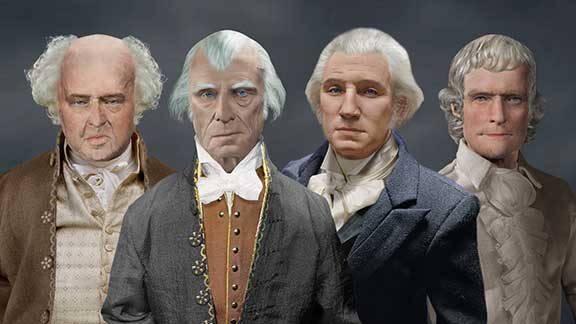
Life Mask Facial Reconstructions of History
Witness the authentic faces of historical figures reconstructed with the remarkable capabilities of Photoshop, utilizing actual plaster life mask castings of their heads and upper torsos.
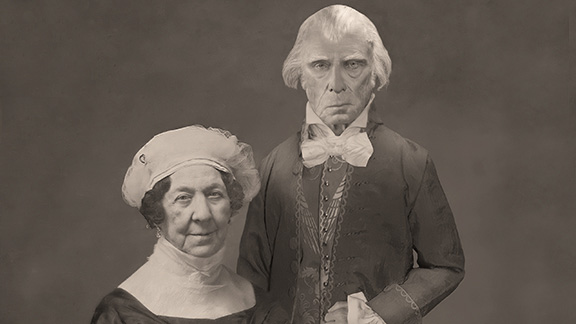
Lost Photographs of History
A captivating collection featuring daguerreotypes, color photographs, and artwork inspired by meticulously reconstructed life masks of prominent figures from American history, including the founding fathers.

Colorizations and Enhancements
Utilizing the powerful tools of Adobe Photoshop and AI, I breathe new life into vintage photographs and daguerreotypes by colorizing, enhancing, de-aging, and occasionally reconstructing them.
Latest Digital Yarbs Videos
Click that red subscribe button to stay up to date with my latest content.
 John Quincy Adams Speaks 1828-2025 (Brought to Life Interview by Miss Poovy) - Trailer
John Quincy Adams Speaks 1828-2025 (Brought to Life Interview by Miss Poovy) - Trailer
 The Real Faces of Marquis de Lafayette - Life Mask Facial Reconstructions and Modern Faces
The Real Faces of Marquis de Lafayette - Life Mask Facial Reconstructions and Modern Faces
 The Real Face of John Adams - Life Mask Facial Reconstruction and De-Aging
The Real Face of John Adams - Life Mask Facial Reconstruction and De-Aging
Click that red subscribe button to stay up to date with my latest content.
About Me

I am Cheryl A. Daniel, also known as Digital Yarbs, an ardent aficionado of both Photoshop and history. My passion lies in reconstructing life masks, statues, and busts of renowned early Americans and other prominent historical figures. At yarbs.net, you can delve into a captivating collection of reconstructions and animations derived from these life masks, showcasing how these subjects might have appeared in daguerreotypes and photographs. Along the way, I sprinkle fascinating historical tidbits to enrich your journey. Among my reconstructions, you will discover the faces of illustrious individuals such as George Washington, John Adams, Thomas Jefferson, James Madison, Dolley Madison, Marquis de Lafayette, Henry Clay, and an array of others!
See or purchase Digital Yarbs' works at these fine historical sites.
Like an image on this site?
Select images are available as signed/numbered high-quality archival giclee prints, limited edition canvases with a certificate of authenticity, and 4x6 premium matte postcards at Digital Yarbs Ebay Store.
What others are saying....
-
"Very Nice! Long live De Lafayette!"
-
"Excellent canvas print of our first president! Transaction was easy and quick. Would highly recommend seller to those interested in getting artwork of our Founding Fathers!"
-
"The postcards are fantastic, artistic creations, and scientific wonders. Shipping time was fast and the artist is honest, friendly, generous, and very forthright. I liked all the extra items sent."
-
"The artist and her art are impressive. The photo card arrived quickly and was mailed with care."
-
"Amazing work and quality. George was a handsome man and this picture does him justice, unlike the toothless, old man images of him. He was in his 50s when he became President. The only change I would make would be to show him with dark, reddish hair like he had in his youth. Thanks!"
-
"Great cards! Finally a real likeness of George Washington! So worth the price! Also, excellent card stock. Seller communication was great as well!"
-
"Love my GW print!! It brings George back to life! Highly recommend Cheryl's work."
-
"Beautifully done picture....George is a handsome guy!"
-
"Nicely done. Very pleased. Consider myself a knowledgeable person on George Washington and I am very impressed. Thank you"
-
"Now here is THE item to buy if you wish a view of what the Leading Lights of America looked like. I got this to harmonize with my 1815+or- House. It came, well packed, with a 'flock of documentation and information-'-a sure sign of a careful, and proud of their work; Vendor. The quality is above first rate. I had planned to place it in a 'Wally World' frame. NOPE, I will spend the money and have it done aright. In all things-Professional is the only word here. Buy some historic art for YOUR house, you will not be disappointed."
-
"Excellent service, product, and price"

